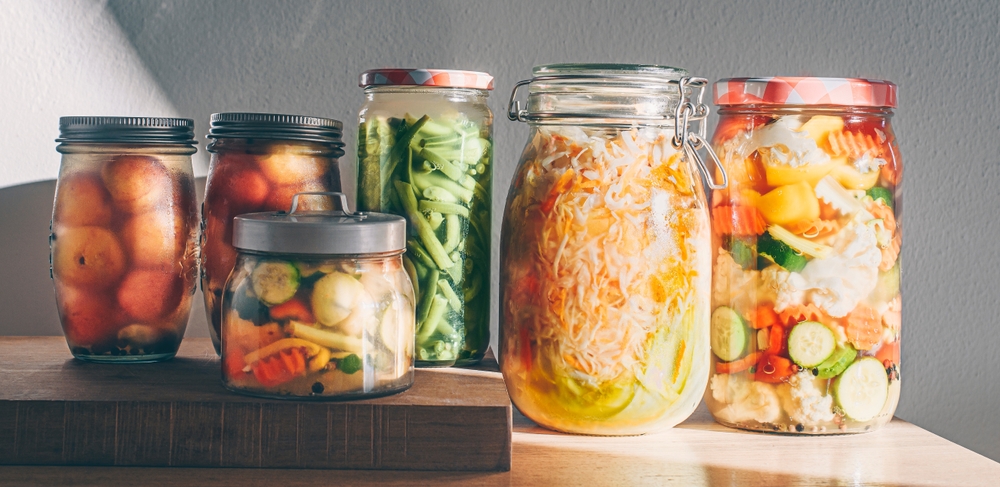Guide to Safe Home Preservation and Fermentation
An accessible guide for home cooks covering safe preservation methods and fermentation basics. Learn how pickling, canning, brining, and lactofermentation work, plus key safety points on temperature, pH, salt, storage, and seasonal ingredient choices.

Home preservation and fermentation let you extend seasonal flavors, reduce waste, and explore traditional food cultures while producing beneficial microbes. This guide outlines practical, safety-focused approaches to pickling, canning, brining, and lactofermentation, and explains how temperature, pH, and salt affect outcomes. Clear storage and labeling practices help prevent spoilage and ensure your preserves and fermented foods are safe to eat.
What is fermentation and how does culture matter?
Fermentation is a metabolic process where microbes convert sugars into acids, gases, or alcohol. In home contexts, lactic acid bacteria and yeasts are common culture agents that shape flavor and preserve food. Understanding the local microbial culture and the role of probiotics helps you manage textures and tastes. Controlled fermentation encourages beneficial bacteria while limiting unwanted organisms by using proper salt ratios, clean vessels, and stable temperatures to steer the process toward safe, predictable results.
How does pickling and brining work?
Pickling typically preserves food in an acidic solution such as vinegar or through brining, which relies on salt and fermentation to produce acid. Brining draws moisture out, creates an environment where lactic acid bacteria thrive, and helps retain crunch in vegetables. When pickling with vinegar, ensure the solution reaches an appropriate acidity level; when brining, measure salt concentrations carefully. Both methods require clean jars, reliable recipes, and attention to salt, temperature, and storage to reduce the risk of spoilage.
What are safe canning and preserves basics?
Canning preserves food by sealing it in sterilized jars and heating to destroy spoilage organisms. Use tested recipes and follow processing times and pressures for high-acid and low-acid foods—low-acid items require pressure canning to reach temperatures that eliminate botulinum risk. Always check jar seals, lids, and signs of spoilage before consumption. Proper labeling with dates and ingredients helps rotate stock and monitor storage life for safety and quality.
How does lactofermentation relate to probiotics and salt?
Lactofermentation uses lactic acid bacteria naturally present on produce or from starter cultures to convert sugars into lactic acid, producing tangy, shelf-stable foods and often probiotic benefits. Salt concentration is crucial: it suppresses unwanted microbes, draws out brine, and supports desirable bacteria. Typical salt percentages range from about 2–3.5% by weight for many vegetables. Rinse, weigh, and use clean tools to maintain consistent salt levels and predictable ferment results.
Why do temperature, pH, and storage affect safety?
Temperature influences the speed and balance of fermentation: cooler temps slow activity and favor milder flavors, while warmer temps speed fermentation but can invite off-flavors or spoilage if uncontrolled. Measuring pH provides an objective safety check—many fermented vegetables reach pH 4.6 or lower, which helps inhibit harmful bacteria. Store finished products in cool, dark conditions and monitor jars for bulging lids, cloudiness, or unpleasant odors as signs of spoilage.
How to plan recipes, seasonality, and practical tips?
Match preservation methods to seasonal produce—firm, freshly harvested vegetables are ideal for brining and pickling, while fruits commonly become jams or preserves. Use tested recipes or reliable sources when adjusting sugar, salt, or acid; small recipe tweaks can change safety parameters. Keep detailed notes on batch ratios, temperatures, and timelines so you can reproduce successful results. Cleanliness, consistent salt or acid levels, and sensible storage decisions are the foundation of reliable home preservation.
This article is for informational purposes only and should not be considered medical advice. Please consult a qualified healthcare professional for personalized guidance and treatment.
Home preservation and fermentation can be safe, rewarding, and sustainable when guided by measured salt, appropriate acidity, correct processing temperatures, and careful storage. By following tested methods and observing sensory and pH cues, you can enjoy seasonal preserves and cultured foods with greater confidence and predictable quality.





